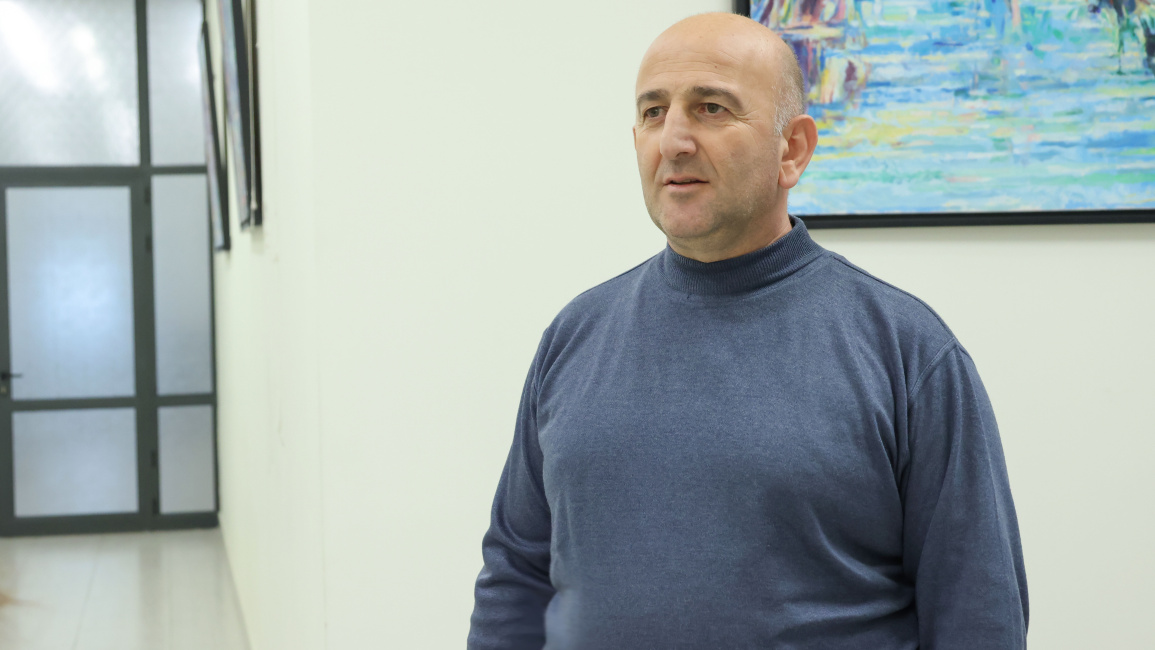February 18, 2025 | 17:00
Research
International cooperation
Competitions
Study by the Chair of Religious Studies: Examining the religious communities of immigrants to Armenia and how they fulfill their religious needs
A research group led by Pargev Barseghyan, Head of the Chair of Religious Studies at YSU Faculty of Theology, will examine the religious life of immigrants in present-day Armenia. The study will focus on the expressions of religious life among individuals who have migrated to Armenia from various countries, including India, Pakistan, Bangladesh, Iran, Iraq, Egypt, Syria, Russia, and Ukraine.

The scientific project titled "Characteristics of the Religious Life of Immigrants in Contemporary Armenia", authored by Pargev Barseghyan, Head of the Chair of Religious Studies, has been approved for funding through the "Scientific Effectiveness Promotion Grant Program - 2025" competition, announced by Armenian Ministry of Education, Science, Culture, and Sports.
According to Pargev Barseghyan, the recent large influx of immigrants to Armenia highlighted the importance of including the religious life of immigrants in the study of the country’s religious landscape, considering that religion is one of the significant driving factors of human behavior in today's social environment.
"From the perspective of further strategic development in this field, these studies will help prepare the Republic of Armenia for a large influx of immigrants and potential demographic changes in the future," emphasized the researcher.
Professor Regina Elsner from the University of Münster in Germany will also participate in the research.

The research team is collaborating with the Migration and Citizenship Service of the Ministry of Internal Affairs of Armenia. The scope of the issues that concern the institution has already been discussed. This collaboration will enhance the service's effectiveness. "The problem is that the field has not been studied in terms of religious identity, religious affiliation, and the characteristics of religious life. In many cases, we do not know which religion or religious organization immigrants to Armenia belong to, what religious and cultural traits they have, what rituals or ceremonies they support. Therefore, our studies will shed light on these matters, and after three years, we will have a clearer picture," said Pargev Barseghyan, adding that in the context of a large and simultaneously changing flow of immigrants, authorities are unable to clearly understand whom they are dealing with. "For example, an immigrant might claim that they fled a certain country because they want to become Christian and are being persecuted in their homeland. They request refugee status. However, there are no clearly defined questions to verify whether this person is telling the truth or is trying to use Armenia as a transit country to move to a more developed European country."
By determining the religious affiliation of immigrants, their numbers, measures to meet their religious needs, and the challenges in addressing these needs in Armenia, the research team will present a clearer picture of Armenia's religious diversity and develop a framework of necessary questions that will help government agencies in formulating their development strategies.
"Thorough studies of contemporary realities show that such migration flows will not only continue but may also increase. In this case, we must examine the course and timeline of these changes in advance, so that we can control the situation in the future," the researcher noted.
Pargev Barseghyan emphasized that, for instance, India is a multi-religious and multi-cultural environment, with Muslims, Hindus, and Sikhs present. As a result of the studies, it may eventually be understood who the people coming to Armenia are, what kind of religious activities they engage in, and whether they practice them at all. "It is not excluded that in 10-20 years, Armenia may have several thousand-member communities of Indians, who will need religious services, education in their native language, and the preservation of their culture. We need to understand whether we are prepared for these changes."
In addition to making the religious affiliations and practices of foreign immigrants to Armenia known to the Armenian public, the research team will also study the religious needs of Armenians in large diaspora communities in Europe, the United States, and Russia, and how those needs are met.
Interviews will be conducted with immigrants both in their workplaces, in cooperation with employers, and in the shelters of the Migration and Citizenship Service, where immigrants reside. Articles will be published in high-ranking local and international journals.
In the recent past, the Chair of Religious Studies has conducted research on Indian, Chinese, and Japanese religions, Islam, the Christian minorities in Armenia, and the characteristics of the religious life of people living in neighboring countries. Pargev Barseghyan emphasized that these studies provide more precise knowledge about these religious communities, which will be applied in future studies of their religious life.

